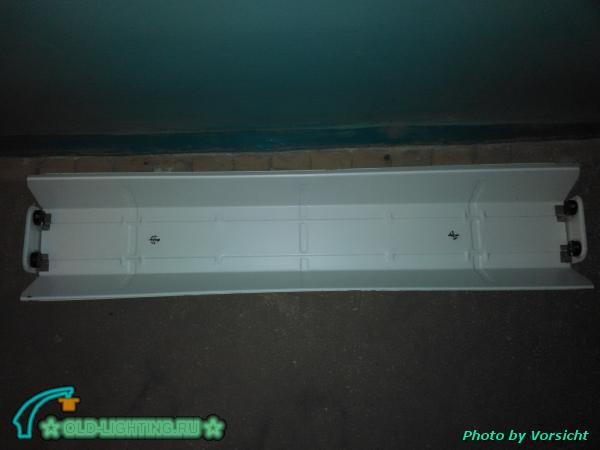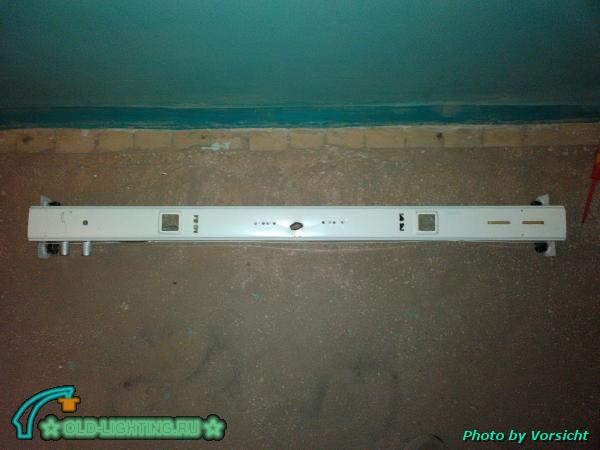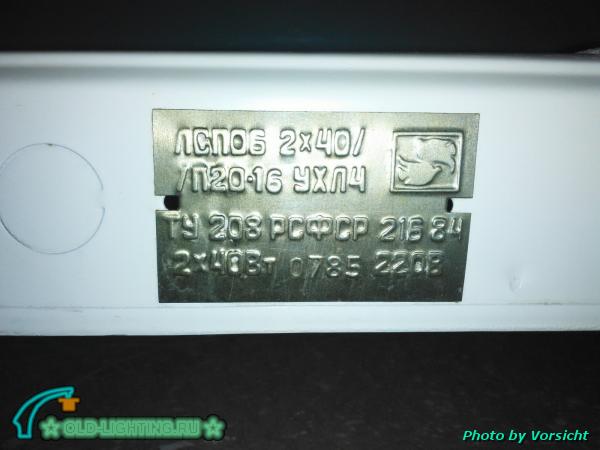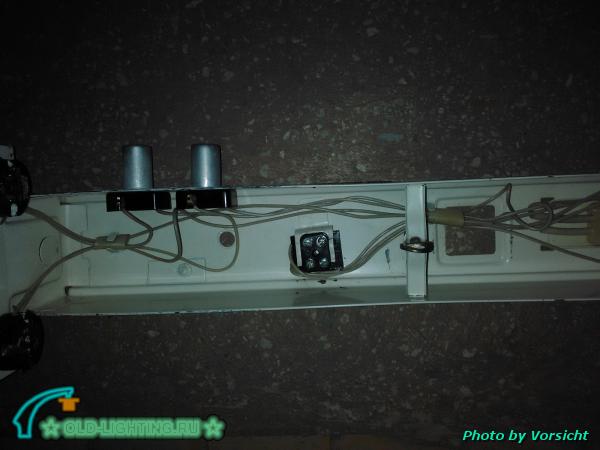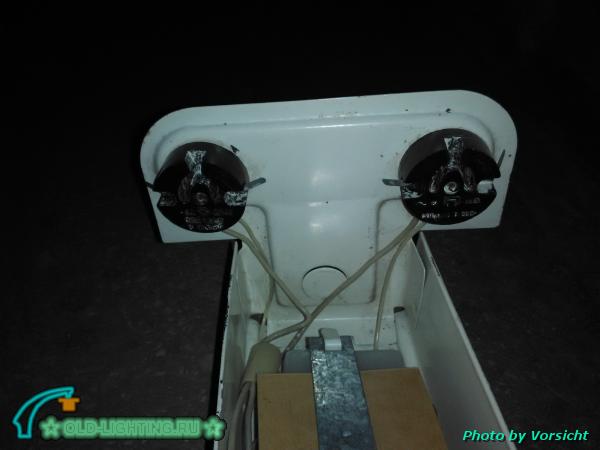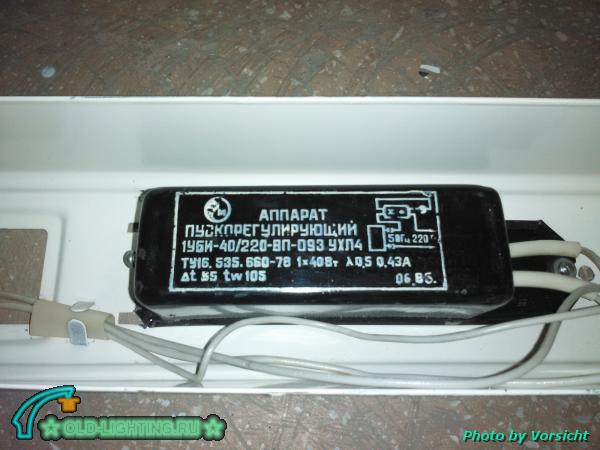ЛСП06-2x40/П20-16УХЛ4
Double-lamp fluorescent fixture 2x40W. A conventional splitted-phase starter ignition circuit is used. One lamp is switched on through the UBI choke (photo 6), the other through the UBE in series with the capacitor. The capacitor is neatly placed in a plastic case and strapped with a galvanized tape with a cardboard lining. It has a specific smell. An interesting feature is the use of chokes from different series of the UBI 093 series, and the UBE 910 series.
Found this luminaire in a near-perfect condition in garages. They just carried it out and put on the street, leaning against the wall. I literally took it in front of the scrap collectors. After washing from dirt and dust, it looked like in the photo.
The set included two lamps: SELZ LB 40-2 00 (2000?) And SVET LB-40-2 00. Both, as it turned out, were usable. But one soon burnt out. So the completely serviceable fixture was thrown out.
The base looks very stylish and would even say modern, if it was not for the punched hole in the middle (see photo 2). But the end elements (photo 5) spoil the whole picture. Somehow they do not fit into the design of the lamp or something. The reflector is designed to be mounted at a high height. But due to the fact that the lamps are placed openly at a sufficient distance from each other, and are not covered by any diffusers, it shines well. The difference from modern ones is immediately evident.
The holes in the base, I think, are for mounting on a busbar.
Such fixtures are very similar to modern ones, which are often installed in all kinds of supermarkets.
It makes noise during operation (slight hum). Not very quiet, but not loud either. If you don't listen, you don't get bored.
Disadvantages:
1. A hole was punched right in the middle of the base to enter the supply wire, clearly not of factory origin, although there are plenty of other holes available for this. Strange logic.
2. At one end, the element on which the sockets are installed is welded with a slight bias. This was clearly the case from the factory, as a result of which one lamp fits right in along the length. And the second lamp is installed with a huge margin in length. But in general there is normal contact everywhere, and it's okay. The lampholders are spring loaded on one side. I noticed that old lamps with soldered socket pins are harder inserted into sockets than modern lamps, in which the wires are pressed into the socket pins.
I have not yet found a use for it. But in the future it is planned to use it for lighting in the country house.

